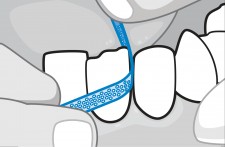
Interproximal reduction, or IPR, is a dental technique used to create space between the teeth. Since it involves removing some of the enamel, many patients worry about its consequences. How much is removed? What does that represent? Why is it typically done?
SACRAMENTO, Calif., December 12, 2017 (Newswire.com) - Interproximal reduction is a classic dental term. It sounds complicated and only gives slight clues as to what it involves. And many patients are afraid of it, even though its use is limited. So, just what is interproximal reduction (IPR) and when do dentists at the Sacramento Dentistry Group use this procedure?
What is IPR?
IPR involves the “reduction” of enamel where specific pairs of teeth touch. (That’s the “interproximal” part of IPR.) Typically, IPR takes place as a result of adjustments made during orthodontic procedures. A common orthodontic correction requiring IPR is dental crowding. That is when the teeth are so close together that they have little to no space between them and start to push each other out of alignment.
With many cases of dental crowding, some orthodontists and dentists choose to simply extract one or more teeth to create the necessary room. This is a far more serious procedure and temporarily painful. IPR is neither painful, nor serious. It’s often done using nothing more than very narrow and fine strips of dental “sandpaper” or other dental tools specifically designed for the job.
The standard amount of enamel removed during IPR is about .2 to .3 millimeters per tooth treated (or about the width of two to three human hairs). Since enamel can be up to 2.5 millimeters thick, that doesn’t amount to very much. If you do multiple teeth, however, each one losing just a little enamel between itself and its neighbor, a lot of room is created in the jaw. This allows the teeth to more readily move into their proper positions and creates the space necessary to eliminate crowding.
The Sacramento Dentistry Group avoids pulling healthy teeth. With traditional orthodontics, like braces, or modern orthodontic technologies, like Invisalign clear plastic aligners, they prefer to create any necessary room between teeth by using IPR. When the procedure is explained to patients, and especially when they are told that it helps them avoid pulling a tooth, most people decide that IPR is the preferred technique.
For more information about orthodontics, Invisalign and interproximal reduction, you may visit the website of the Sacramento Dentistry Group or contact them at 916-538-6900.
Source: Sacramento Dentistry Group
Share:
